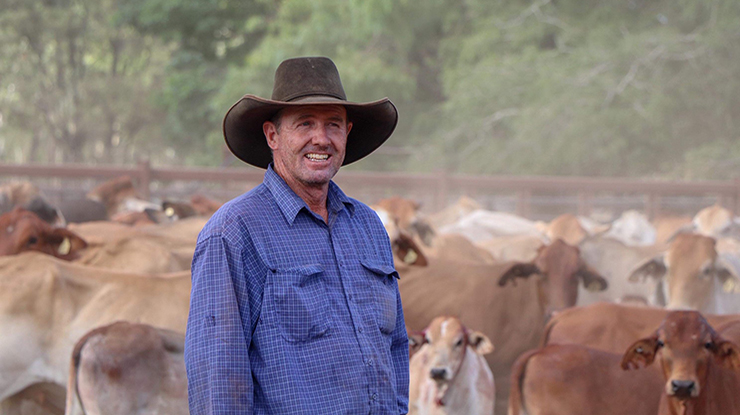
Thinking about giving your yards a makeover?
When it comes to transporting livestock, loading and unloading are some of the most dangerous parts of the process and contribute to high rates of workplace injuries and even fatalities.
A safer transporting process begins on-farm, where producers have an important role to play by ensuring that their own facilities, particularly their ramps and forcing yards, are up to scratch.
|
In 2020, Standards Australia released a new Standard – Livestock loading/unloading ramps and forcing pens (AS5340:2020) – which sets out the requirements for ramps and forcing pens to ensure the safety and welfare of animals and livestock handlers. Former Chair of the Animal Welfare Committee and ALRTA livestock transporter, Mick Debenham, said most producers will need to update elements of their ramps and forcing yards for compliance with the Standard. “Almost everyone is going to have aspects of their facilities that aren’t safe when compared to the current state of knowledge, so there are going to be actions everyone can take,” he said. The safest option is to comply with the new national Standard. It is available to order via Standards Australia and costs around $125. The ALRTA free publication, Guide for safe design of livestock loading ramps and forcing yards is still available as a guide to producers who want to assess the safety of their facilities. |
Yard upgrades that tick the boxes
When Central Queensland Brahman producer Russell Lethbridge (pictured above) realised the benefits that he could achieve from improving his loading facilities, it was a no brainer for him to upgrade.
Updating his facilities not only improved loading times but brought additional benefits to safety and welfare for himself, his transporters and his animals.
Retrofitting yards
Russell started making modifications to the first of his four cattle yards before the Australian Standard for loading ramps and forcing pens was developed.
However, he used the Australian Livestock and Rural Transporters Association (ALRTA) guide and researched the upgrades, so is confident they comply with the Standard and current requirements.
“Before upgrading, we did a lot of research through the ALRTA guide, looked at what other producers had in their own yards and consulted with transporters, then adapted these findings to our own operation,” Russell said.
“We’re always loading double deck cattle crates up here so the biggest change we made was adding a ramp that could load the top deck of a crate to the existing single ramp we had.
“We also added new rails on the ramps that would improve handler safety by reducing fall risks and which are compliant with the Standard.”
Benefits from the modifications were evident from the first load Russell sent out, with greatly improved loading efficiency, free-flowing cattle that didn’t need to be pushed up the ramp and all-round improvements to workplace health and safety.
Managing driver fatigue
Russell is a firm believer that northern producers have a responsibility in managing driver fatigue, and that updated loading facilities are a key part of this.
“A driver’s day often starts when you start loading. If you’re taking an unreasonable amount of time to get animals onboard, turning a 45-minute job into a three-hour job, you’re adding to their fatigue,” he said.
“In northern Australia, most trips already take a whole day, so the onus is on producers to do what they can to decrease loading times, including through improving their facilities.”
Fatigue can also be reduced if producers prepare their animals for transport before the driver arrives.
“Animals should be drafted ahead of time, and any other preparation, like adding tags, should already be done, so as soon as the driver pulls in, the loading can start,” he said.
A transporter’s perspectiveQueensland livestock transporter, Gerard Johnson, has additional advice for northern producers to contribute to driver safety. “A lot of northern operations require road trains for transport – which in turn requires side-loading,” Gerard said. “It’s a lot safer for the handlers and the cattle if when side-loading the doors and ramp can be locked into position by chaining them to the crate or pinning them to the ramp. “Another common problem I’ve seen is with the walkways up the side of the ramp. Lots of these have trip hazards and holes in them, and if they are made of logs, sometimes these aren’t secured on one side and can tip up.” Gerard said that a lot of northern yard set-ups aren’t currently up to scratch, which could be attributed to low knowledge of the new Standard and its requirements. “A lot of producers probably aren’t aware of the Standard, which leads to a ‘she’ll be right’ attitude regarding their yards,” he said. “I’ve found though that producers are responsive to improving safety, especially when they are informed of the Standard or when drivers or fellow producers point out things that they can change. “Most of the time it’s only about 20 feet worth of their yard that we’re working with, so recommended modifications shouldn’t be expensive and will greatly improve the safety of handlers.” |



